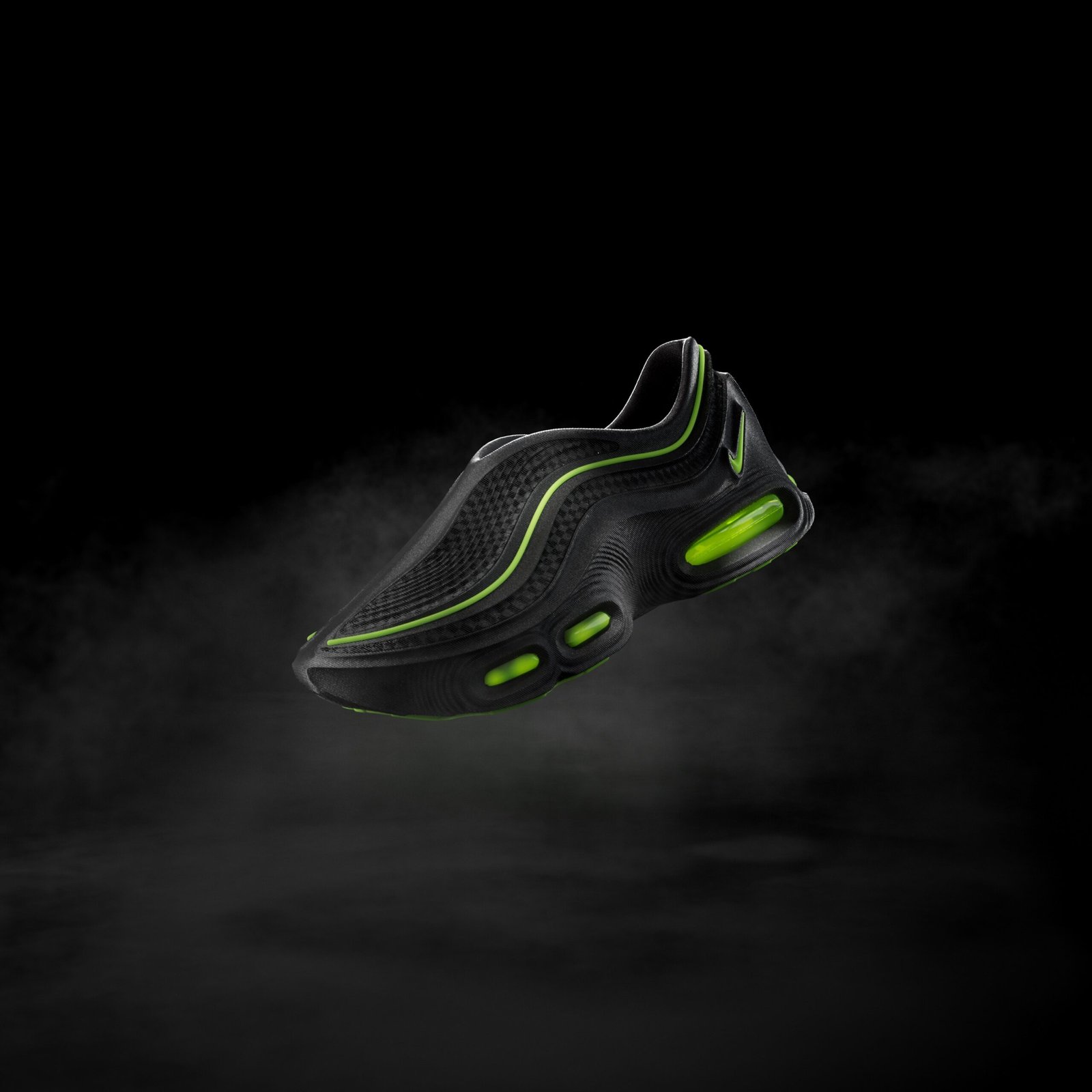
Nike Launches 3D Printed Air Max 95000 Sneaker at ComplexCon
Nike has unveiled the Air Max 95000, a 3D-printed sneaker that represents the company’s first shoe from its Project Nectar
Dear Customers,
Our new online quoter and client portal are officially live!
From September to December, both old and new versions will run in parallel as a transition period.
✨ Special Offer:
Enjoy automatic quantity discounts — the more you order, the lower the unit price (up to 25% off for selected materials).
🌟 Already available:
⚡ Better user experience & faster server performance
🕒 More accurate delivery time estimates
📝 Simplified and faster order process
🔮 Coming soon:
🛠 Instant quote for CNC & other processes
📦 Order tracking & workflow updates
📧 New email notification system
📂 Batch upload & batch editing of models
🔍 Online DFM (Design for Manufacturability) checks
📊 Enhanced order panel with detailed statistics
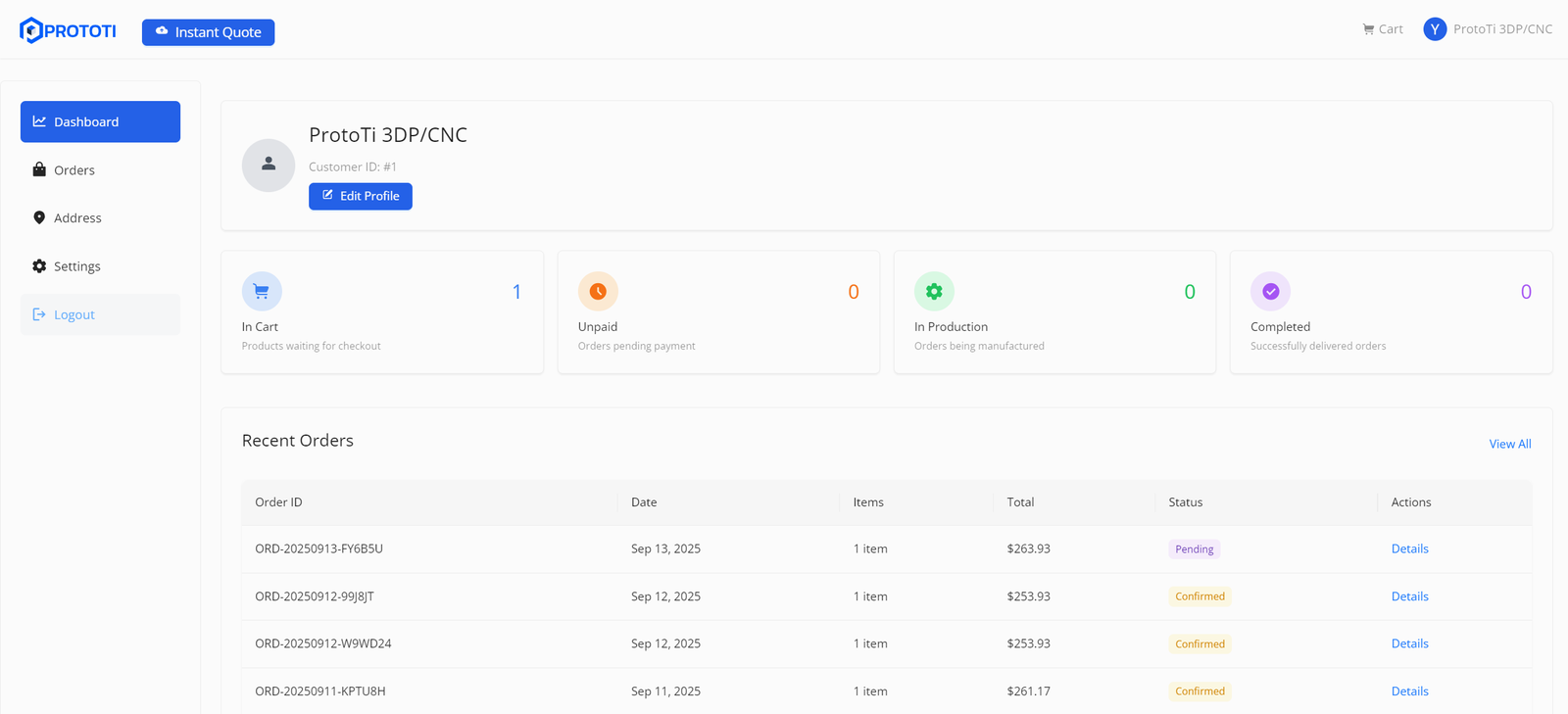
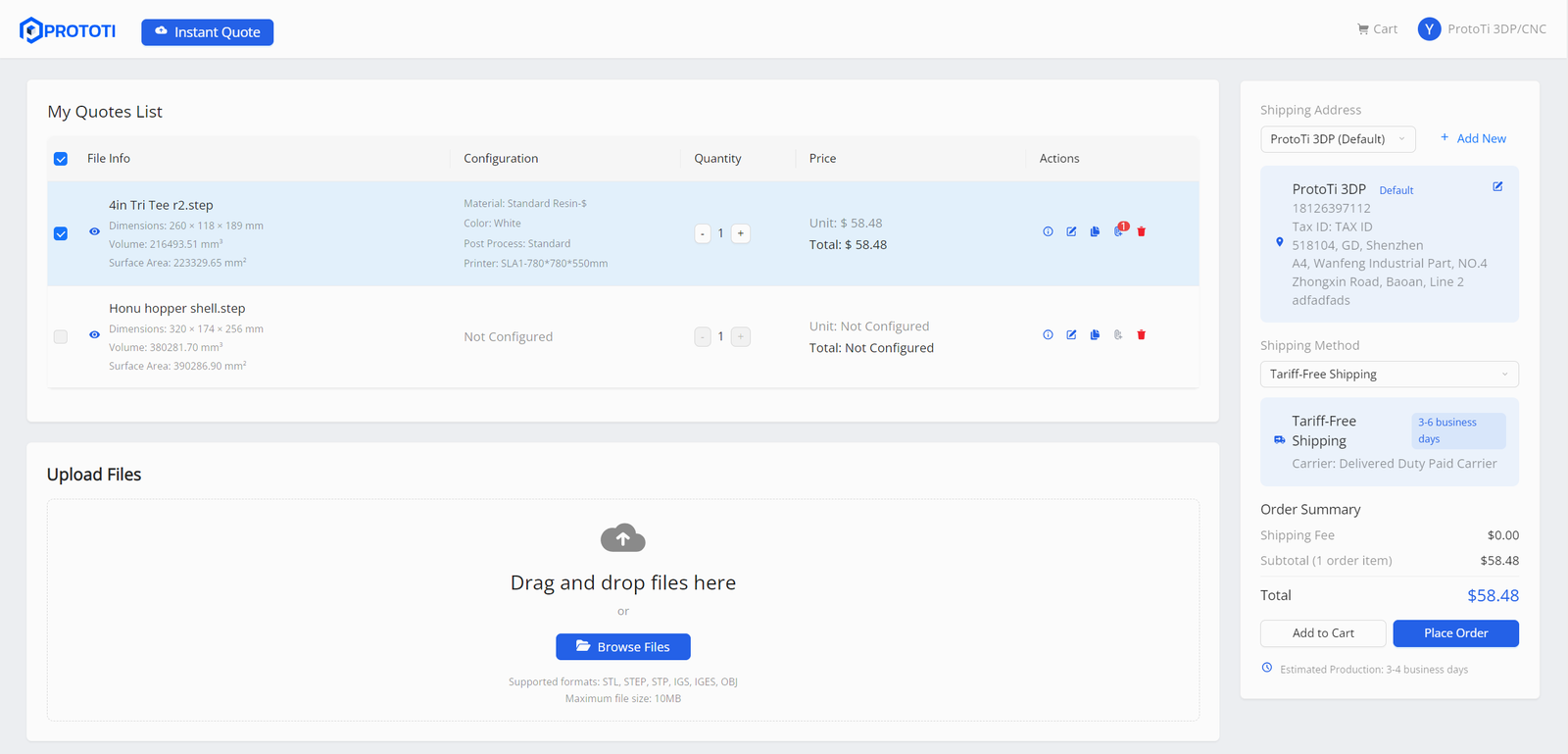
Thank you for your support — we look forward to bringing you an even smoother ordering experience!
— ProtoTi
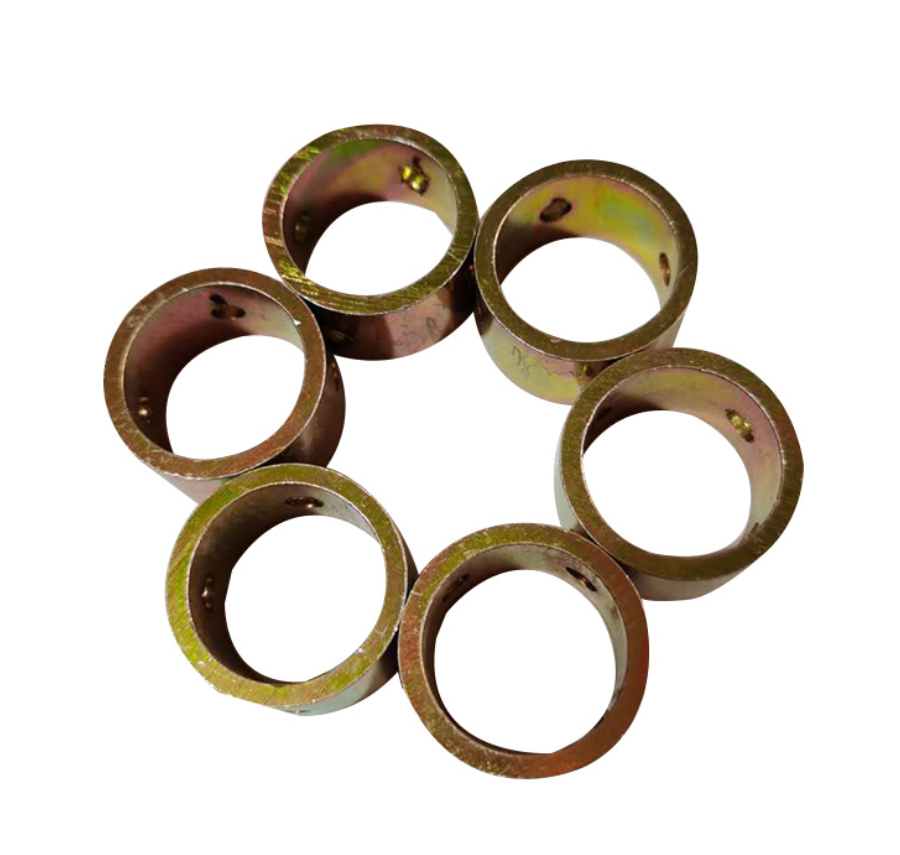
Machining, whether it is turning, milling, drilling, or grinding, ultimately results in the base material state of the part, which is usually carbon steel, alloy steel, or cast iron. These metal materials are highly susceptible to electrochemical reactions with oxygen and water in the natural environment, especially in industrial or marine atmospheres such as humid, acid rain, and salt fog, leading to corrosion and rusting.
Rust not only affects the appearance of the product, but also seriously damages the dimensional accuracy, mechanical strength and service life of the parts. For a part that has undergone precise processing and has a tolerance control at the micron level, even a tiny rust can lead to its inability to be assembled or functional failure, resulting in huge economic losses.
Therefore, surface treatment has become an indispensable final process in mechanical manufacturing. Among various surface treatment methods, galvanizing has emerged as one of the preferred solutions for rust prevention of steel parts due to its excellent cost-effectiveness, reliable protective performance, and good conductivity. It is like giving the parts a sturdy “zinc armor”, effectively isolating corrosive media and protecting the internal steel substrate.
“Galvanizing” usually refers to the process of coating a layer of zinc (Zn) metal or zinc alloy on the surface of steel or iron substrates, which serves the purposes of rust prevention, decoration, or improving performance.
For mechanical processing parts, galvanizing includes both hot-dip galvanizing (HDG) and electro-galvanizing, as well as mechanical plating or peen plating, among other forms.
To understand why galvanization is so effective, one must understand its fundamental protective mechanism: cathodic protection by sacrificial anode.
The chemical properties of zinc are more reactive than those of iron, and its standard electrode potential is more negative than that of iron. When the zinc coating and the steel substrate are simultaneously exposed to a corrosive environment, they will form a voltaic cell. In this cell:
Zinc as an anode (sacrificial anode): It undergoes oxidation reactions and is corroded first.
Steel as the cathode (the protected body): It is protected and will not undergo oxidation reaction (rusting).
Even if scratches or damages occur on the surface of the galvanized layer, exposing the underlying steel substrate, the zinc layer will still sacrifice itself through electrochemical reactions to protect the exposed iron from corrosion. This process will continue until the zinc layer is completely consumed. This is the most fundamental difference between galvanization and other purely physical isolation coatings (such as painting), and it is also the reason for its higher reliability in protection.
Compared with other surface treatment technologies (such as chrome plating, painting, phosphating, etc.), galvanizing of mechanical processing parts has the following significant advantages:
Excellent anti-corrosion and rust prevention performance: The standard electrode potential of zinc is lower than that of iron. In a corrosive environment, it can play the role of a sacrificial anode to protect the base metal. Even if the local part of the galvanized layer is damaged, it can still continue to protect the base metal, and the anti-corrosion effect is significantly better than other protective layers.
Good adhesion performance: Through reasonable pretreatment processes and control of galvanizing process parameters, the galvanized layer can form a strong bond with the base metal of the mechanical processing parts, and is not prone to peeling or flaking, and can withstand certain mechanical impacts and friction.
High cost-effectiveness: Zinc is abundant in resources and relatively inexpensive. The galvanizing process is mature, and the production efficiency is high. Compared with other high-end surface treatment technologies, it can effectively reduce the surface treatment cost of parts while ensuring the protective effect, and has a wide range of applications.
Aesthetically pleasing and highly processable: The surface of the galvanized layer is smooth and uniform, presenting a silver-white or colored appearance (after passivation treatment). The appearance is beautiful; at the same time, the galvanized layer has certain processability and can undergo subsequent coating, spraying, etc., further enhancing the surface performance and decorative effect of the parts.
Wide application range: The galvanizing process can be applied to various materials of mechanical processing parts, such as carbon steel, alloy steel, cast iron, etc., and is not limited by the shape and size of the parts. Whether it is small precision parts or large complex structural components, effective galvanizing treatment can be carried out.
The process will be explained mainly in terms of hot-dip galvanizing, but other types will also be briefly touched upon.
The typical process is divided into: surface pretreatment → molten zinc immersion coating → cooling / passivation / inspection.

Degreasing/Caustic Cleaning: Use hot alkaline solution or alkaline cleaning agent to remove organic contaminants such as oil, grease, welding slag, and thin paint.
Pickling: Usually, dilute sulfuric acid (H₂SO₄) or dilute hydrochloric acid (HCl) solution is used. The purpose is to remove the oxide scale/ rust and mill-scale on the surface of steel parts.
Fluxing / Zinc Ammonium Chloride: Immersing the steel parts in a solution containing zinc ammonium chloride to remove residual oxides and form a protective film, which prevents the substrate from being oxidized again before entering the furnace.
The pre-treated components are immersed in a molten zinc bath (with zinc purity generally ≥ 98%) at a temperature of approximately 450 °C (depending on the zinc alloy ratio) to enable a metallurgical reaction between the zinc and the steel substrate.
During the electroplating process, zinc forms a Zn-Fe alloy layer with the iron substrate, and then a layer of pure zinc is applied externally. After the electroplating process is completed and the equipment is removed from the tank, the zinc layer continues to react with the steel part until the temperature drops.
After the leaching process, the steel parts are usually tilted, vibrated or shaken to remove the excess zinc liquid, and then cooled or passivated.
The cooling methods can be air cooling, water cooling or chemical passivation.
Passivation treatments (such as chromate treatment, non-chromium coatings) can enhance the effectiveness of zinc layers in preventing “white rust” (zinc hydroxide).
Finally, inspections such as appearance, thickness, and adhesion are carried out. If there are any defects such as incomplete coating, droplets, or peeling on the hot-dip galvanized surface, the product is considered Non-compliant.
Due to differences in size, quantity and precision requirements, mechanical processing parts sometimes adopt the following alternative or supplementary processes.
The zinc is uniformly deposited on the surface of the part through electrolysis. The coating is thin and the surface is smooth. It is suitable for thin sheets, small parts or applications requiring high precision.
The advantages are that the coating thickness can be controlled and the dimensional deformation is small; the disadvantage is that its corrosion resistance is not as good as that of hot-dip galvanizing.
Also known as impact galvanization or hammering galvanization, it is suitable for small hardware components such as nuts, bolts, springs, etc. By hammering the parts together with zinc powder, additives, and grinding media in a sealed container, the zinc particles are cold-bonded to the surface of the parts.
Advantages: It can avoid the hydrogen embrittlement problem (there is a risk of hydrogen embrittlement when using hot-dip galvanizing for high-strength steel), and is suitable for cavities or blind holes in complex geometries and small parts. Disadvantages: The coating is usually thinner and the corrosion resistance is slightly inferior.
Place the parts, zinc powder, and filling medium (such as sand) into a sealed drum and heat them to approximately 300-500 °C. This process causes the zinc to be atomized and dispersed onto the surface of the steel part, forming a Zn-Fe diffusion layer. This method is suitable for small parts and internal hole galvanization.
| Coating Type | Typical Thickness* | Corrosion Protection | Dimensional Impact | Best Use Case |
|---|---|---|---|---|
| Hot-Dip Galvanizing (HDG) | 50-200 µm (depends on steel & time) | Excellent – full piece protected, including internal holes | Moderate – adds thickness, may affect close-tolerances | Structural members, outdoor equipment, large parts |
| Electro-Galvanizing | 5-25 µm | Good – but less robust than HDG | Minimal – suited for precision parts | Sheet metal, automotive panels, indoor use |
| Mechanical Plating / Mechanical Galvanizing | 10-50 µm | Good for small parts, especially high-strength components | Very minimal – suitable for small fasteners | Nuts, bolts, springs, complex geometry small parts |
| Sherardising (Thermal Diffusion) | 10-60 µm | Good – uniform everywhere, including interior cavities | Minimal – parts size limited by drum | Small parts requiring internal coating, small batches |
The surface of the zinc-coated material has a high activity and is prone to rapid oxidation and darkening. To further enhance its corrosion resistance, appearance, and special properties, post-treatment is necessary. The most important part of this is the passivation treatment.
Passivation involves immersing the galvanized parts in a solution containing chromate salts or other non-chrome conversion agents, thereby forming a dense passivation film on the surface with a thickness of only a few nanometers. This film can:
Significantly enhance corrosion resistance: It can increase the corrosion resistance time of galvanized parts by several times to tens of times.
Give a colorful appearance: Depending on the composition of the passivation solution, the following can be achieved:
Blue-white passivation: Silver-white with a slight bluish tint, has average corrosion resistance, and has a good appearance.
Colored passivation: Rainbow color, military green. It has the best corrosion resistance and is the most commonly used passivation method.
Black passivation: Dark black color, featuring both decorative properties and excellent corrosion resistance.
Chromium-free passivation (environmentally friendly passivation): Blue or multicolored, meeting environmental protection regulations such as RoHS.
Enhanced coating adhesion: The passivation film acts as an intermediate layer, enhancing the adhesion of subsequent coatings (such as painting).

Excellent anti-corrosion performance: The alloy layer formed by hot-dip galvanizing adheres well to the zinc outer layer, resulting in remarkable corrosion resistance.
High cost-effectiveness: Compared to using stainless steel or aluminum, galvanized steel components achieve long-term durability at a lower cost.
Wikipedia
Comprehensive coverage: For hot-dip galvanizing, molten salt electroplating enables the entire surface of the parts (including internal holes, corners, and blind holes) to be covered by the coating.
Wide application range: From large structural components to small hardware parts, an appropriate galvanization method can be selected based on the characteristics of each part.
Subsequent processing compatibility: The surface after galvanizing can be further painted, powder-coated, or used as an assembly base layer.
Size variation / tolerance impact: The coating of hot-dip galvanizing is thicker, which may cause droplet formation, increase the size of the parts, and may have an impact on parts with tight fits.
Surface defect risk: If the pre-treatment is not done properly, problems such as undercoating, peeling, delamination, and white rust may occur.
Hydrogen embrittlement risk (for high-strength steel): During the hot-dip galvanizing process, some high-strength steels may undergo brittle cracking due to hydrogen adsorption. Mechanical galvanizing has an advantage in this regard.
Aesthetic / Paint Compatibility Requirements: For certain galvanized surfaces, additional finishing or pre-treatment for painting is necessary; otherwise, the paint adhesion may be poor.
Environmental restrictions: In environments with strong acids, strong bases, and extremely high chloride ion content, merely galvanizing may not be sufficient; additional protection is required.
The choice is not about the highest price but rather the one that suits you best. Please follow the following decision-making process:
Indoor dry environment: For those with low requirements for corrosion resistance, a thin layer of electro-galvanizing plus blue-white passivation can be chosen.
Outdoor general atmosphere / industrial atmosphere: For those with high corrosion resistance requirements, electro-galvanizing + colored passivation or mechanical galvanizing should be selected.
Marine environment / Corrosion-resistant environment: Preferentially use thick-layer hot-dip galvanizing or zinc plating.
Precision mating parts / threaded parts: Prefer electro-galvanizing or zinc infiltration treatment as they have a minimal impact on dimensions. Thermal immersion galvanizing must be absolutely avoided.
High-strength steel parts (with strength > 1000 MPa) / Elastic elements: The preferred method is mechanical galvanizing or zinc plating to avoid the risk of hydrogen embrittlement.
Large structural components / thick plates without precision requirements: The preferred method is hot-dip galvanizing, which offers long service life and high cost-effectiveness.
Require bright and attractive appearance: Choose electro-galvanizing + corresponding passivation.
Cost-sensitive large-scale standard parts: Electro-galvanizing or mechanical galvanizing are ideal choices.
Strive for the ultimate protection lifespan, without caring about the appearance and size: Hot-dip galvanizing is the only option.
Such items as fences, railings, stair handrails, balcony supports, and steel structure components are all exposed to outdoor environments all year round and require excellent anti-corrosion capabilities. Therefore, hot-dip galvanizing is widely adopted.
Screws, nuts, washers, springs, etc., due to their large quantity, diverse shapes, batch processing, and often the need for anti-rust small parts, mechanical galvanization or electro-galvanization have become common choices. Their characteristics are thin coating, small size variation, and suitability for high-strength components.
In fields such as automobiles, trucks, motorcycles, railway vehicles, and ships, steel structural components or parts, due to high humidity, high salt content, and severe corrosion, galvanizing or zinc alloy coatings have become an important means of anti-corrosion.
For example, HVAC equipment, cooling towers, water treatment equipment, and cleanroom structural components, even in indoor environments, often require excellent corrosion resistance. This can be achieved by using electro-galvanizing or a combined system of galvanizing and coating.
Galvanization, this surface treatment technology that has stood the test of time for over a century, offers a solid and reliable protection for steel parts through its unique electrochemical protection mechanism of “sacrificing itself”. From the smooth and precise electro-galvanizing to the sturdy and thick hot-dip galvanizing, from the mechanical galvanizing without hydrogen embrittlement to the uniform and wear-resistant infiltration galvanizing, each process has its own unique advantages and applicable scenarios.
As a mechanical designer, process engineer or purchasing staff, one must deeply understand the differences of these processes and make comprehensive considerations based on the specific working conditions, precision, strength and cost requirements of the parts. Only in this way can the most scientific and economical choice be made. Dressing each meticulously processed part with the most suitable “zinc armor” not only significantly improves the quality and reliability of the product, but also reduces the maintenance costs throughout the entire life cycle.

Start your project today. Get free DFM from professional engineer at ProtoTi.
Share the Post:

Nike has unveiled the Air Max 95000, a 3D-printed sneaker that represents the company’s first shoe from its Project Nectar
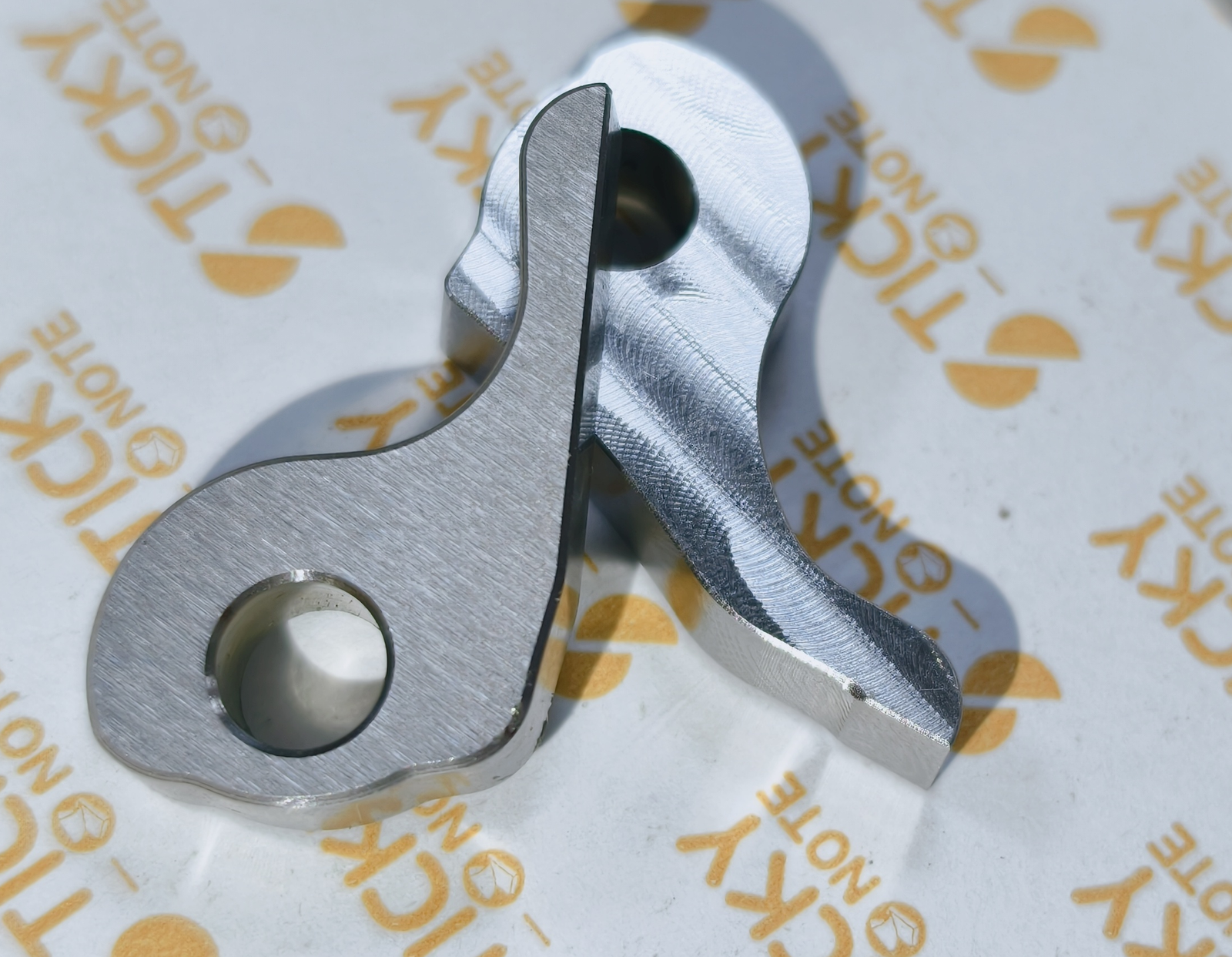
In the field of precision manufacturing, part polishing is a crucial step that determines the performance, lifespan, and appearance of products. Whether it is the core components of automotive engines, the precise components of medical devices, or the micro parts of electronic equipment, after professional polishing treatment, not only can the surface smoothness be improved, the friction loss be reduced, but also the corrosion resistance be enhanced, laying a solid foundation for subsequent assembly and use. This article will start from the basic understanding of part polishing, deeply analyze the mainstream polishing processes, material adaptation schemes, common problem solutions, equipment selection techniques, and industry development trends, providing comprehensive and practical reference guidelines for manufacturing enterprises, technicians, and procurement professionals.

As the autumn chill sets in and whispers of Halloween fill the air, the most creative holiday of the year

In central Türkiye’s Kayseri province, researchers are turning to 3D printing to help restore fossils that date back 7.7 million